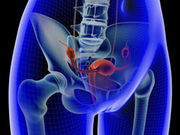Pain score lower among patients who receive lidocaine than those who receive placebo
MONDAY, Sept. 11, 2017 (HealthDay News) — A 10-mL 1 percent lidocaine paracervical nerve block reduces pain during intrauterine device (IUD) insertion, according to a study published online Sept. 5 in Obstetrics & Gynecology.
Aletha Y. Akers, M.D., M.P.H., from Children’s Hospital of Philadelphia, and colleagues randomized 95 adolescents and young women (ages 14 to 22) receiving a 13.5-mg levonorgestrel IUD to either a 10-mL 1 percent lidocaine paracervical block or a sham block (1 cm depression of the vaginal epithelium at paracervical block sites with a wooden cotton-tipped applicator).
The researchers found that 79 percent of the study participants previously used contraception. After IUD insertion, the median visual analog scale score was significantly lower in the lidocaine block group compared with the sham block group (30 versus 71.5).
“The 1 percent paracervical nerve block may be useful for reducing patient-reported pain during IUD insertion, but its use must be balanced with a careful consideration of the risks associated with this nerve blockade,” conclude the authors.
Several authors report financial ties to the pharmaceutical industry, and one author trains health care providers to insert the Nexplanon contraceptive device as a consultant for Merck. Bayer Healthcare Inc. provided funding for the study.
Copyright © 2017 HealthDay. All rights reserved.








